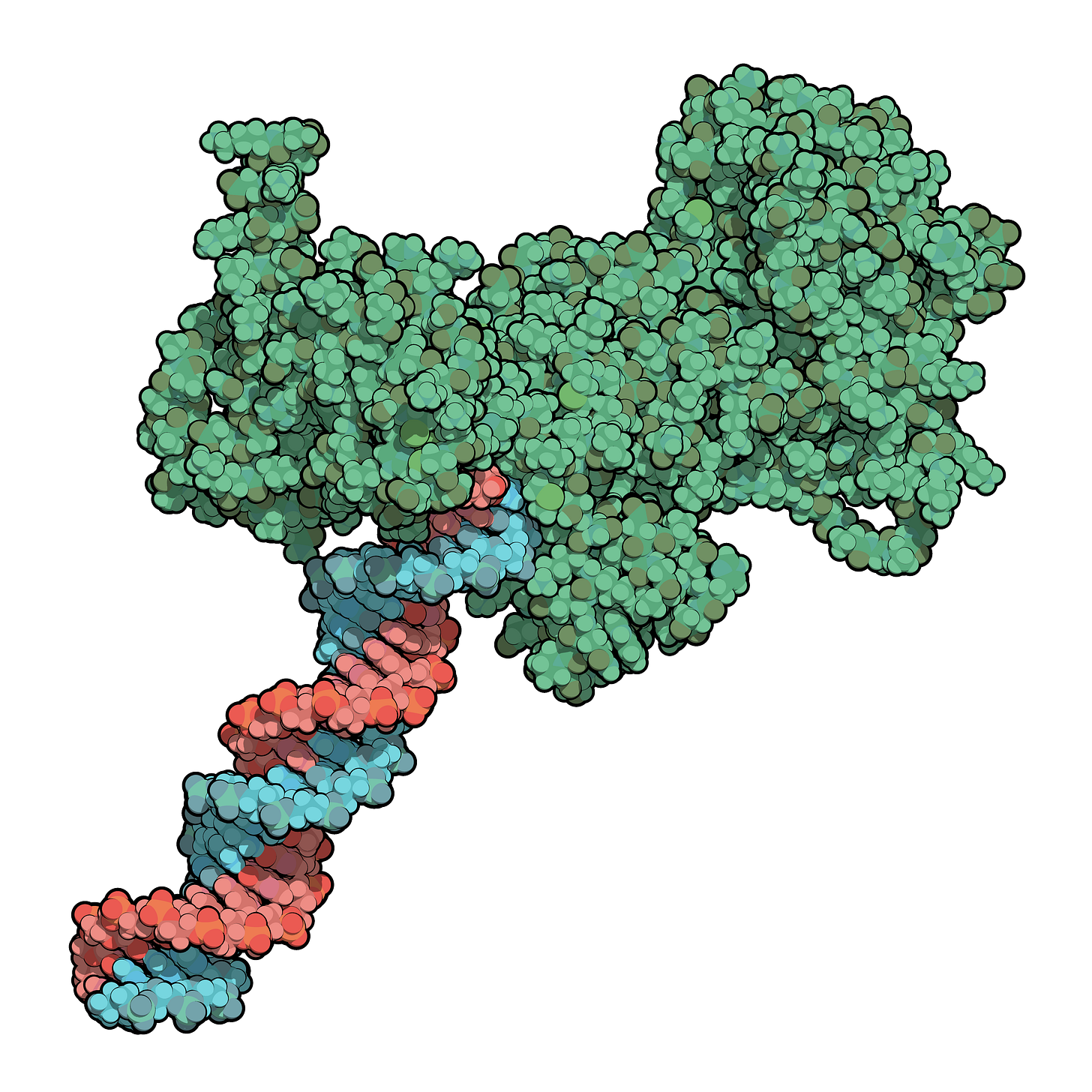DNA Polymerase and the Art of Life’s Endless Revisions
A microscopic enzyme powers evolution, modern medicine, and the digital age of biology
There are biomolecules that build, and biomolecules that break. But some, like DNA polymerase, are the quiet scribes of existence—copying, correcting, and preserving the code that makes us who we are.

Imagine a cell, humming with functional purpose. Deep inside, a double helix unwinds, its rungs splitting apart like the pages of a well-loved book. Enter DNA polymerase: a tiny, tireless enzyme, gliding along the strands, reading each letter, and matching it with its perfect pair. It works with astonishing speed and precision, copying billions of letters in the time it takes you to blink. Every cell division, every new leaf, every growing child owes its existence to this molecular copyist.
But DNA polymerase is more than a biological workhorse. It is the reason life can persist, adapt, and evolve. When mistakes slip through—rare, but inevitable—they become the raw material for evolution, the subtle edits that drive the story of life forward.
In the 20th century, scientists harnessed the power of DNA polymerase for their own ends. The invention of the polymerase chain reaction (PCR) turned this humble enzyme into a superstar, able to copy a single strand of DNA into millions in just a few hours. Suddenly, the secrets of genes, ancestry, and disease were within reach. Forensic science, medical diagnostics, and even the mapping of the human genome—all became possible thanks to the relentless fidelity of DNA polymerase.
So next time you marvel at the diversity of life, the power of modern medicine, or the mysteries hidden in your own DNA, remember the enzyme at the heart of it all: the copyist, the corrector, the quiet artist of the cell.
The Impact Today
DNA polymerase is the engine behind every living thing’s ability to grow, heal, and reproduce. In the lab, it’s the backbone of genetic testing, ancestry kits, and the fight against disease. PCR tests—powered by a heat-loving version of DNA polymerase—helped track and diagnose COVID-19, and continue to revolutionize everything from agriculture to criminal justice.
As we enter the age of personalized medicine and synthetic biology, DNA polymerase remains at the center of the story—proof that even the smallest machines can have the greatest impact.
Did You Know?
DNA polymerase can add up to 1,000 DNA bases per second in bacteria, and about 50 per second in human cells.
The discovery of “Taq polymerase”—a heat-resistant DNA polymerase from a Yellowstone hot spring microbe—made PCR practical and launched the biotech revolution.
DNA polymerase has a built-in “proofreading” function, catching and correcting most mistakes as it copies DNA.
Without DNA polymerase, life as we know it would be impossible: no growth, no healing, no inheritance.
Curious for more? Please consider subscribing to Molecular Weights and discover the hidden stories behind the molecules that shape our world.




